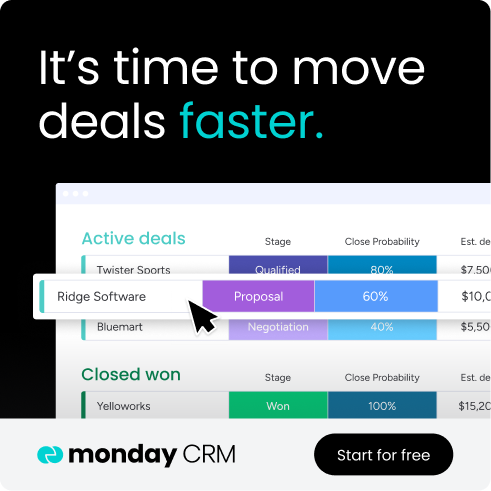Sales success relies on momentum. When reps can focus on connecting with prospects and closing deals, the entire team moves forward with confidence. But too often, energy gets drained by manual updates, scattered tools, and endless admin work. That kind of friction doesn’t just slow the sales cycle down: it makes it harder to see what’s really happening across the pipeline.
The best sales teams turn things around by using tools that streamline daily tasks, bring data together, and provide a clear picture of performance. The right setup keeps everyone aligned, automates repetitive work, and frees time for the conversations that actually drive revenue.
This article highlights some of the best sales tools for 2025, with a look at the features that matter most, how to choose the right fit, and the impact the right platform can have on closing deals faster and more consistently.
Key takeaways
- Stronger sales foundations: modern platforms bring structure to the sales cycle pipeline, replacing scattered notes and manual follow-ups with clear, organized workflows.
- Centralized data: a single source of truth aligns teams around consistent customer information and ensures no opportunity slips through the cracks.
- Automation benefits: repetitive admin tasks are reduced or eliminated, giving sales representatives more time to focus on building relationships and closing deals.
- Platform integration: the best tools connect seamlessly with existing business software, creating a unified workspace that improves collaboration and decision-making.
- Flexibility at scale: monday CRM stands out for its no-code customization, AI features, and seamless integrations that help teams grow without added complexity.
What are sales tools?
Sales tools are the backbone of a modern sales team. They take what would otherwise be a collection of scattered notes, siloed data, and inconsistent follow-ups, and turn it into a clear process that supports stronger relationships and more consistent results. Instead of relying on memory or manual tracking, these platforms create structure that helps teams stay organized, efficient, and focused on closing deals.
- Clearer paths to success: sales tools transform scattered information into a structured process that keeps the team aligned on what matters most.
- Less manual work: automation handles tasks like lead tracking, outreach, and data entry so reps can dedicate more time to building relationships.
- Shared visibility: a single source of truth ensures everyone works from the same customer data and interaction history, reducing missteps and missed opportunities.
- Time back for selling: by removing repetitive admin, sales teams can reinvest their energy into strategic activities that actually drive revenue.
- Unified systems: with platforms like monday CRM, every stage of the sales cycle comes together in one intuitive workspace, helping teams stay agile, aligned, and confident.
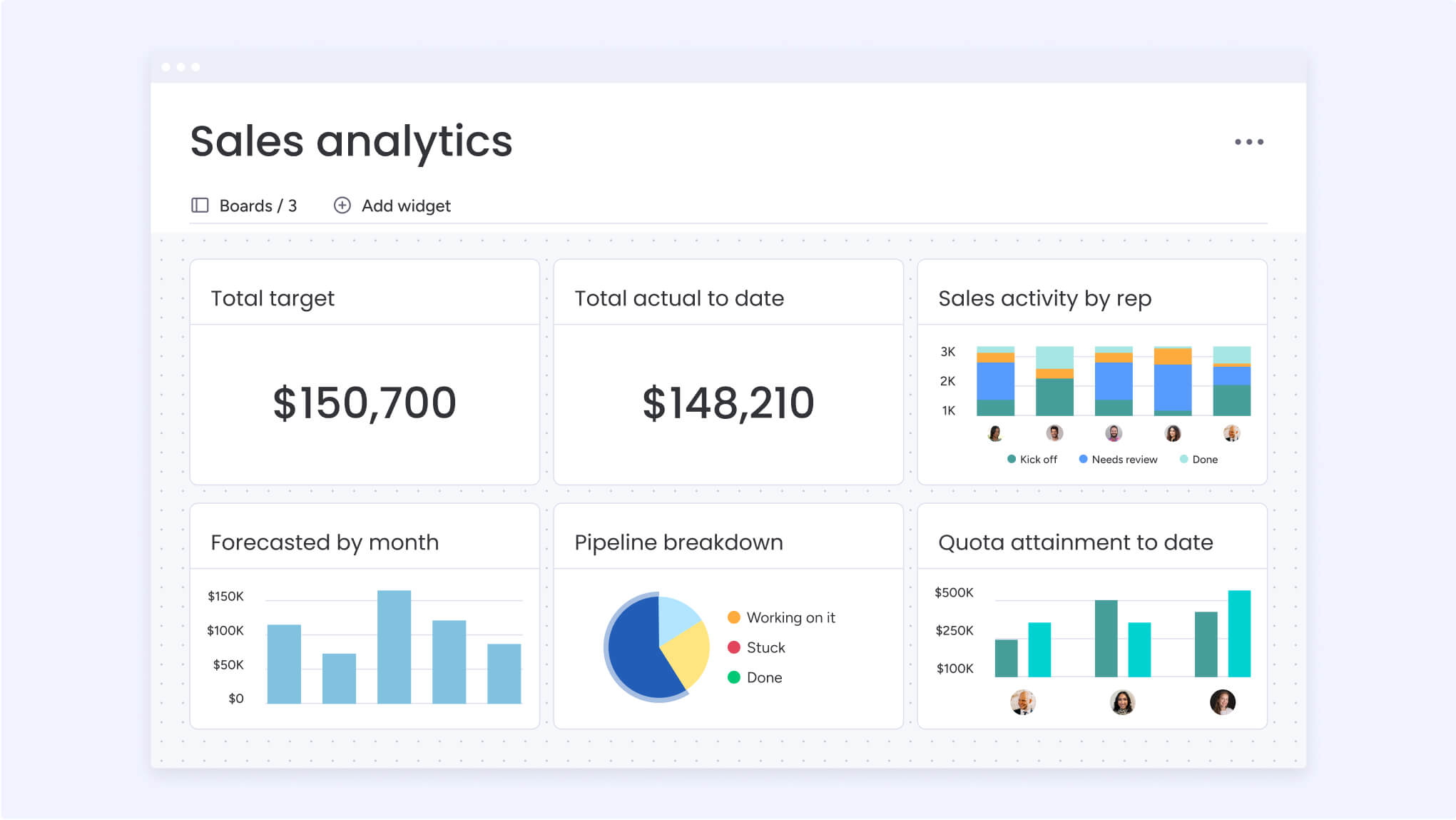
5 best sales platforms and tools to optimize your sales cycle pipeline
Building a sales tech stack isn’t about collecting every tool available, but about choosing a cohesive set of solutions that work together to simplify daily tasks, improve visibility, and support every stage of the sales cycle from first contact through to final agreement. A well-chosen CRM often sits at the centre, centralizing data and automating communication so the team can concentrate on high-value activities, while surrounding tools enhance collaboration, accelerate processes, and keep momentum strong.
The following platforms represent the core building blocks of an effective sales operation, giving your team the clarity, alignment, and confidence needed to close more deals with consistency.
1. monday CRM
Sales teams need flexibility without complexity, and that’s where monday CRM shines. Built to adapt to the way teams already work, it combines intuitive design with automation and AI features that simplify pipeline management and free up time for relationship-building.
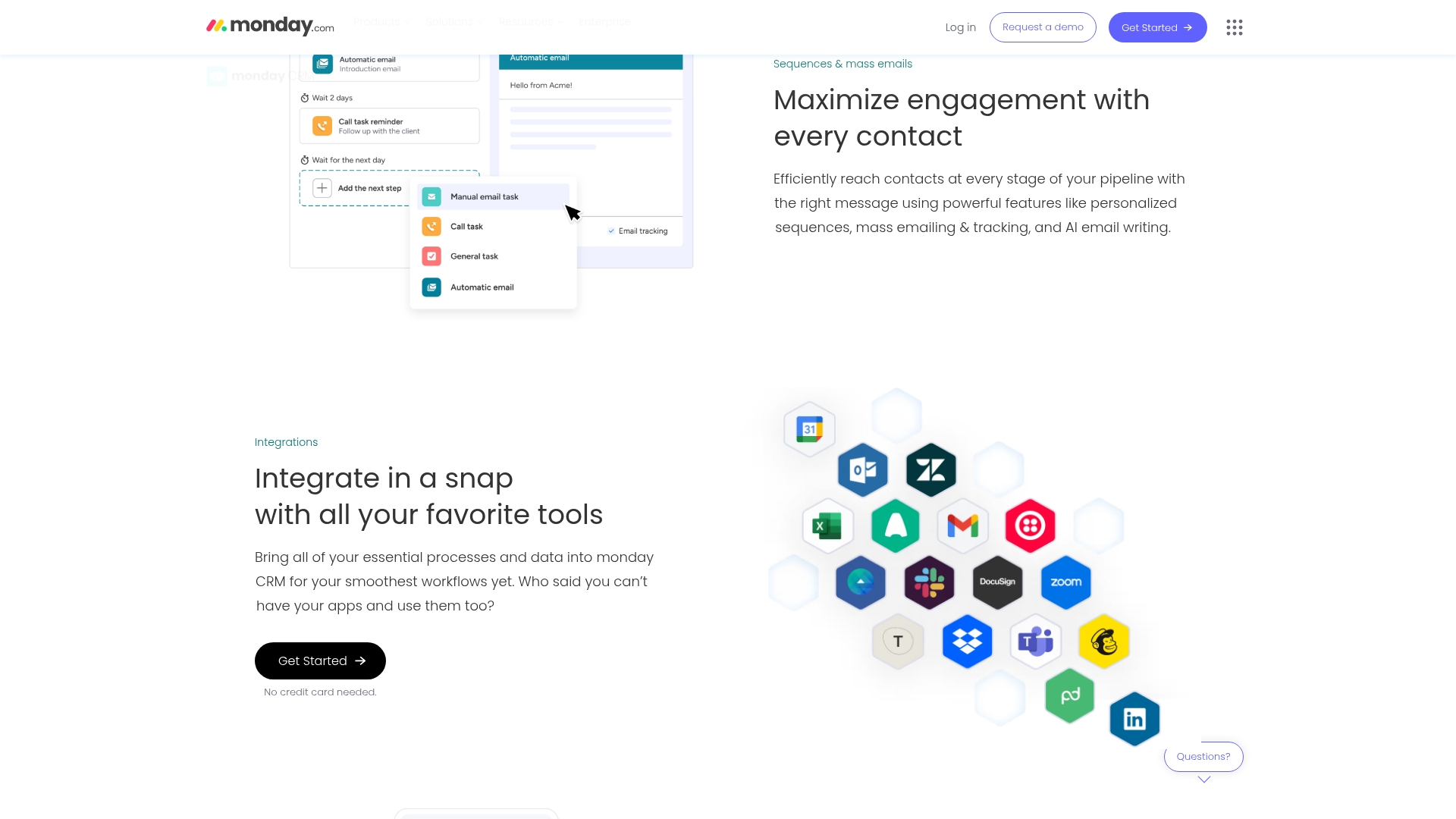
Use case: monday CRM empowers sales teams to customize their entire sales process without technical expertise while leveraging AI to automate routine tasks and accelerate deal closure.
Key features:
- Drag-and-drop pipeline customization with multiple views (Kanban, timeline, Gantt).
- AI-powered email composition, task generation, and content summarization.
- Unified platform connecting sales with marketing, customer success, and project management.
Pricing:
- Free: $0 (up to 2 seats, 3 boards, basic features).
- Basic: $9/month per seat (billed annually, minimum 3 users).
- Standard: $12/month per seat (automations, integrations, calendar view).
- Pro: $19/month per seat (advanced features, 25K monthly actions).
- Enterprise: Contact sales (enterprise-scale features, 250K monthly actions).
Why it stands out:
- Visual, color-coded interface that makes pipeline management intuitive for any team member.
- No-code customization allows teams to build their ideal sales process without IT support.
- Work OS foundation enables seamless collaboration between sales and other departments.
Advanced AI features
AI capabilities within monday CRM go beyond basic automation to actively support your sales strategy. The platform’s “monday magic” AI assistant generates personalized emails, rephrases content for maximum impact, and converts meeting notes into actionable items that move deals forward. You can even build complex reporting formulas using natural language, turning data analysis from a time-consuming chore into a simple conversation with your CRM.
Automations
The platform’s no-code automation builder uses simple “recipes” to eliminate repetitive tasks that slow down your sales cycle. Set up automatic lead assignments, follow-up reminders, and status updates that trigger based on deal progression or customer actions. Enterprise teams get access to 250,000 monthly automation actions, ensuring even the most complex sales operations run smoothly without manual intervention.
Integrations
monday CRM connects seamlessly with your existing tech stack through 200+ integrations, including Gmail, Outlook, Slack, Zoom, and HubSpot. The platform’s robust API allows for custom integrations that sync data across all your business tools. This unified approach means your sales data flows automatically between systems, giving you a complete view of customer interactions without switching between platforms.
Sales-focused features
The platform addresses common sales challenges through customizable deal stages, automated lead scoring, and real-time pipeline visibility that keeps deals moving forward. Built-in email sequences and mass communication tools help maintain consistent customer touchpoints, while mobile apps ensure your team can update deals and log activities from anywhere. Post-sales project management capabilities also help maintain customer relationships beyond the initial purchase.
2. Salesforce
As one of the most established names in sales software, Salesforce delivers scale and depth for organizations with complex sales structures. It offers a vast ecosystem and highly customizable workflows, making it a powerful choice for enterprises that demand advanced control and forecasting.
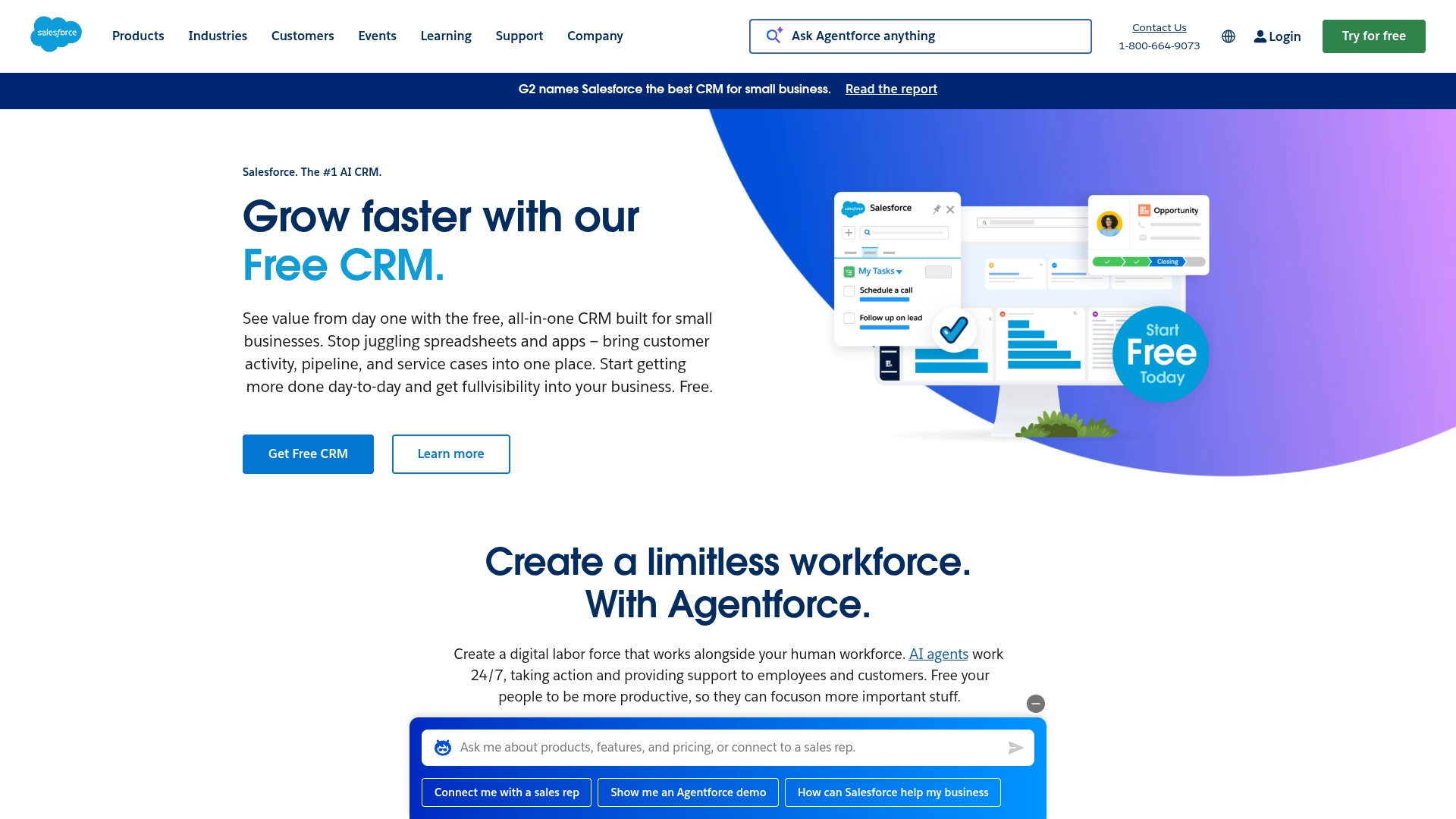
Use case: Salesforce Sales Cloud serves as a centralized digital workspace for all customer and sales-related information, designed to streamline complex sales processes and increase productivity for enterprise-level organizations.
Key features:
- Lead and opportunity management with AI-powered insights through “Einstein AI” for predictive analytics and automated lead scoring.
- Advanced sales forecasting and comprehensive reporting with customizable dashboards to track KPIs across multiple teams.
- Extensive automation capabilities for repetitive tasks like data entry, follow-up emails, and workflow management.
Pricing:
- Starter: $25/user/month (billed annually).
- Professional: $80/user/month (billed annually).
- Enterprise: $165/user/month (billed annually).
- Unlimited: $330/user/month (billed annually).
- Additional costs may apply for advanced features, integrations, and customization services.
Considerations:
- Steep learning curve due to extensive feature set can overwhelm new users and require significant training investment.
- High total cost of ownership when factoring in licensing, customization, integration, and ongoing support expenses.
3. HubSpot
HubSpot has built its reputation on bringing marketing and sales together, and its Sales Hub continues that tradition. With a user-friendly interface and automation that reduces manual work, it’s a great options for small to midsize businesses looking for a connected, all-in-one solution.
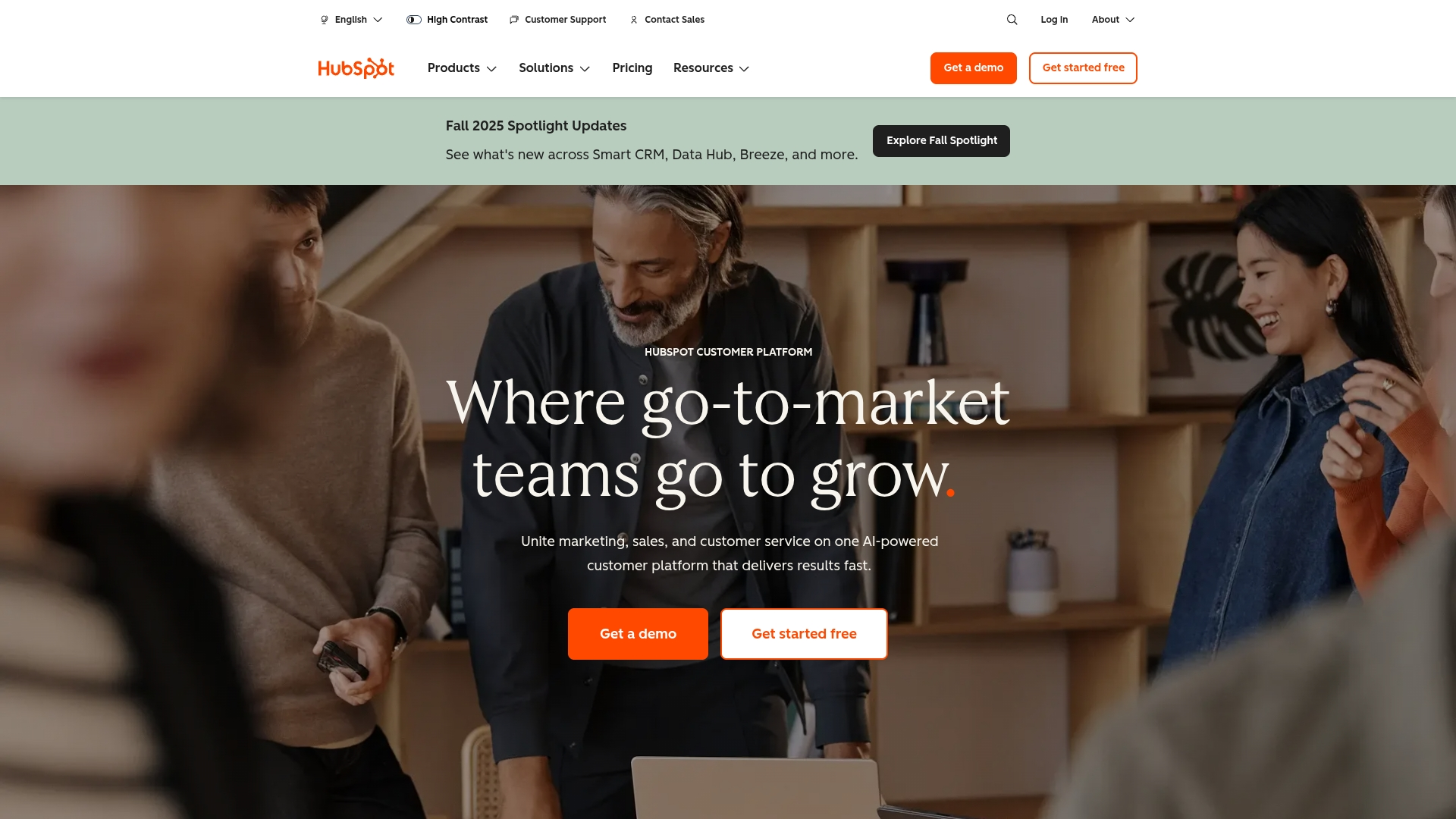
Use case: HubSpot Sales Hub centralizes your entire sales process from prospecting to deal closure, with AI-powered automation that eliminates manual tasks and provides deep customer insights for more strategic selling.
Key features:
- AI-powered prospecting agents and conversation intelligence that identify high-value leads and optimize outreach timing.
- Integrated marketing automation that nurtures leads through personalized email sequences and multi-channel campaigns.
- Advanced CPQ capabilities with automated quote generation, customization, and payment collection.
Pricing:
- Free: $0/month with deal tracking, live chat, and meeting scheduling.
- Starter: $15–$20/month per seat with automated outreach and instant payments.
- Professional: $100/month per seat featuring AI forecasting and high-value sales prospecting software features.
- Enterprise: $150/month per seat including custom objects and conversation intelligence.
Considerations:
- Pricing can escalate quickly as you add more contacts and users, with significant jumps between tiers.
- Advanced customization and reporting features require technical expertise or partner assistance.
4. Zoho
Zoho CRM offers an affordable yet feature-rich platform that integrates seamlessly with the broader Zoho business suite. It’s well-suited for teams who want robust automation and AI-powered insights without stretching budgets or overcomplicating their sales process.
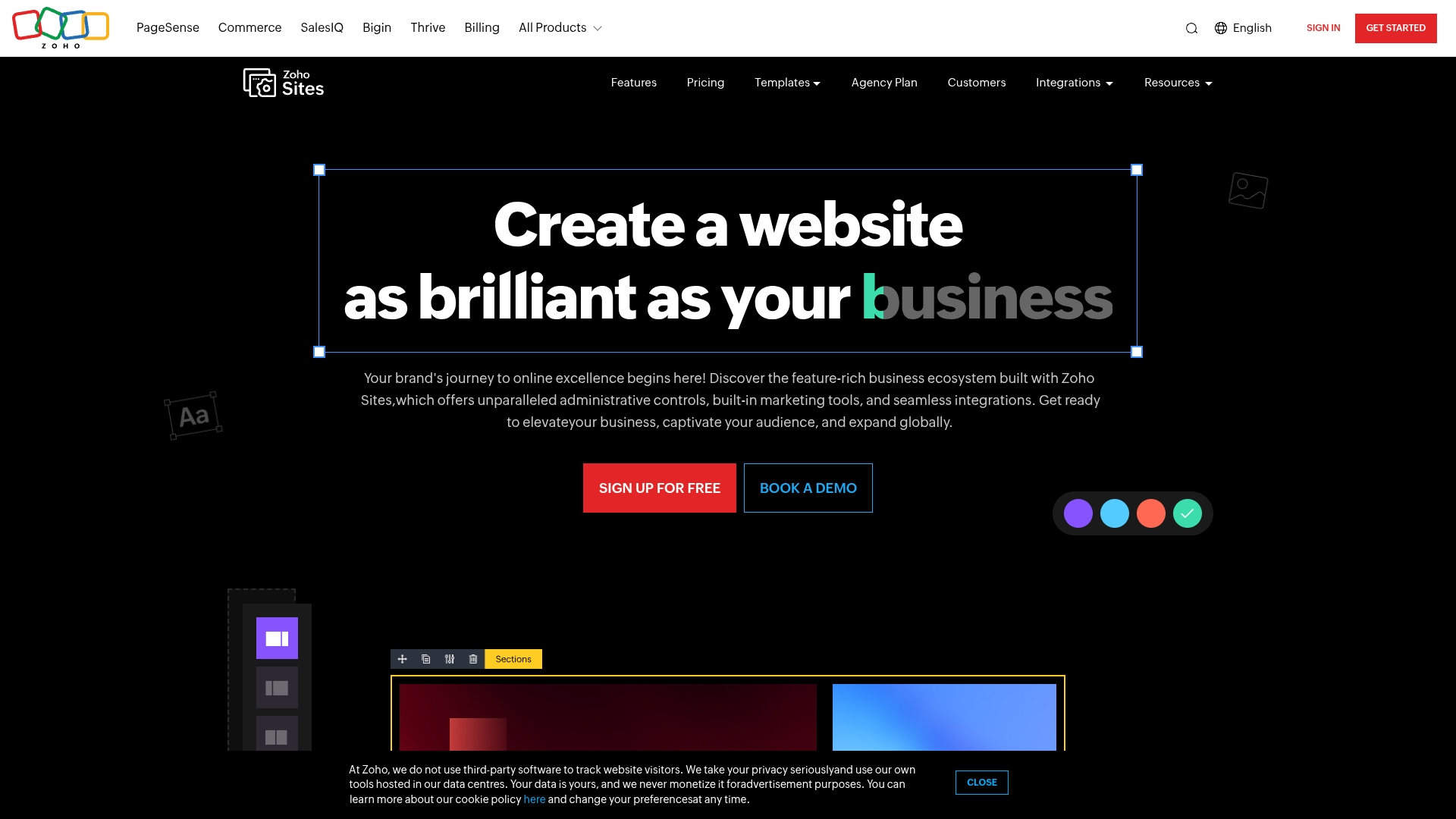
Use case: Zoho CRM serves as the central hub for sales teams who want powerful automation, AI-driven insights, and seamless integration with finance, marketing, and customer support functions — all within a single, affordable platform.
Key features:
- Sales force automation with AI-powered assistant “Zia” that provides predictive analytics and intelligent recommendations.
- Omnichannel communication management across email, phone, social media, and live chat from one interface.
- Configure, Price, Quote (CPQ) functionality with direct integration to Zoho’s finance suite for seamless quote-to-cash processes.
Pricing:
- Standard: $25/month per organization (billed annually).
- Premium: $59/month per organization (billed annually).
- Custom: Contact sales for enterprise pricing.
- Free trial: 14-day free trial available with no hidden charges.
Considerations:
- Customer support quality has been inconsistent, with some users reporting slow response times and the need for multiple tickets.
- The extensive customization options can create complexity that requires technical expertise to manage effectively.
5. Pipedrive
For teams that prefer a visual, straightforward way to manage pipelines, Pipedrive keeps things clear and actionable. Its drag-and-drop style and focus on activity-based selling make it ideal for small and growing businesses that want sales tracking without the heavy lift of enterprise platforms.
Use case: Pipedrive helps sales teams visualize their entire sales process through customizable pipeline stages, making it easy to track deal progress and identify bottlenecks before they impact revenue.
Key features:
- Visual Kanban-style sales pipeline with drag-and-drop deal management across customizable stages.
- AI Sales Assistant that analyzes data to predict deal win probability and suggest next-best actions.
- Comprehensive automation tools for follow-up emails, activity creation, and deal progression workflows.
Pricing:
- Lite: $14/month per user (billed annually).
- Growth: $39/month per user (billed annually).
- Premium: $49/month per user (billed annually).
- Ultimate: $79/month per user (billed annually).
- Free trial: 14-day free trial available with no credit card required.
- Add-ons: available for features like Projects (from $6.67/month) and Campaigns (from $13.33/month).
Considerations:
- Limited native marketing automation features compared to all-in-one platforms like HubSpot.
- Advanced reporting capabilities can have a learning curve for users seeking highly customized analytics.
How to choose the right sales platform for your team
Choosing a sales platform is about more than comparing features. The right tool should fit naturally into your team’s daily routine, removing friction and giving representatives the freedom to focus on building relationships and closing deals.
When exploring options, keep these points in mind:
- Ease of adoption: the platform must be intuitive so your team can pick it up quickly and use it consistently.
- Integration with existing tools: smooth connections with your current systems prevent silos and make adoption feel seamless.
- Flexibility to scale: look for a central hub that adapts as your business grows instead of locking you into rigid workflows.
- Focus on what matters: the best platforms support everything from lead capture to automated communication, ensuring no opportunity slips through the cracks.
The decision ultimately comes down to whether you want to manage a patchwork of disconnected systems or bring everything together in one unified solution that drives alignment and accelerates your entire sales motion.
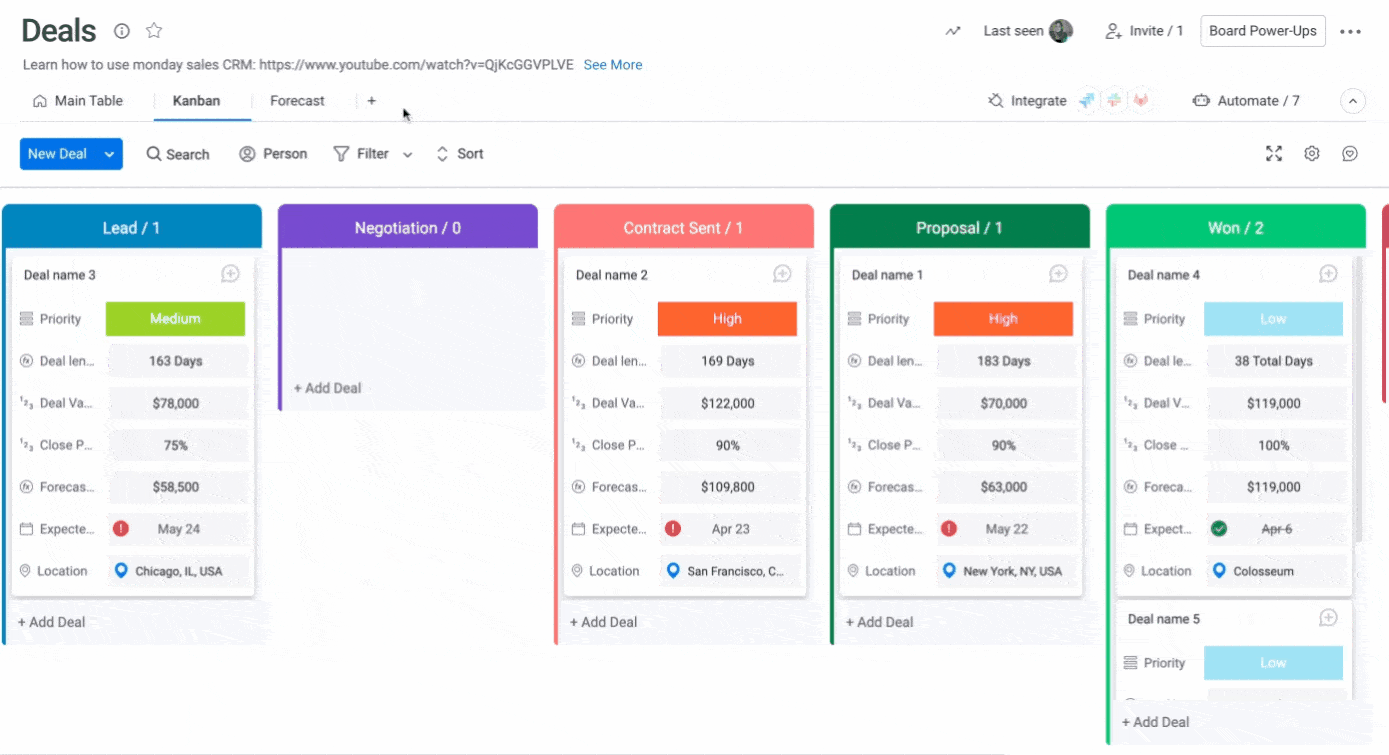
Issues to avoid when implementing sales platforms
Rolling out a new sales platform can be a turning point for a team, but lasting success often depends on how well the transition is managed. Adoption tends to stall when challenges aren’t addressed early, and what should be a game-changer risks turning into wasted effort. By approaching implementation with awareness and preparation, the move becomes smoother and far more impactful.
Some common challenges to watch for include:
- Rigid systems: when a platform forces teams into unfamiliar processes, adoption drops and reps fall back on old habits.
- Low adoption rates: even the most advanced software fails if it isn’t intuitive and easy to use every day.
- Process misalignment: tools should support proven workflows rather than complicating them with unnecessary steps.
- Weak ROI: without proper setup and buy-in, expensive platforms can quickly go underused and fail to deliver results.
A flexible solution like monday CRM helps minimize these challenges by allowing teams to create workflows that reflect how they already sell. Its no-code framework and customizable automations make adoption feel natural, strengthen alignment, and free sales reps to focus on closing deals more effectively.
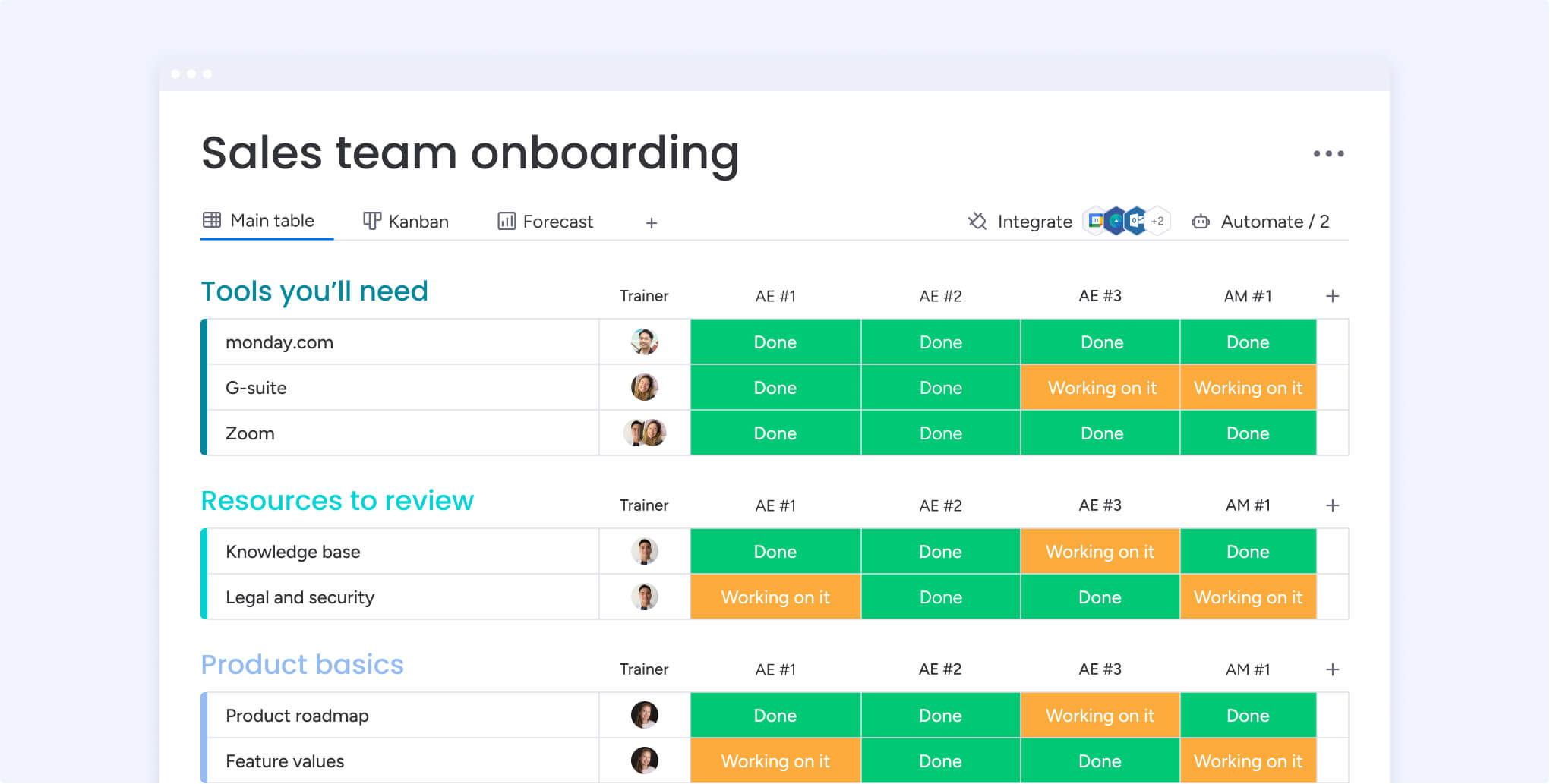
Turning strategy into ROI with monday CRM
Many teams still manage a patchwork of disconnected tools, but leading organizations are shifting their focus from adding more software to using technology more intelligently. The modern benchmark for success is a unified approach, where sales, marketing, and customer success work together in a single system that drives growth as one cohesive team.
The advantage of this approach goes far beyond reducing app overload. By consolidating all customer data into one accessible location, you create a clear view of the entire journey, from first contact to post-sale engagement. With every interaction in context, your team gains the clarity to move faster, make smarter decisions, and maintain momentum throughout the sales cycle pipeline.
This is exactly where monday CRM delivers. Built to adapt to the way your team works, it combines automation, customizable workflows, and an intuitive workspace that keeps everyone aligned. By removing administrative friction and giving full visibility into the pipeline, it frees your team to focus on what matters most: building relationships and closing deals.
The content in this article is provided for informational purposes only and, to the best of monday.com’s knowledge, the information provided in this article is accurate and up-to-date at the time of publication. That said, monday.com encourages readers to verify all information directly.
Frequently asked questions
What sales tools do small businesses need most?
For small businesses, the most essential tool is a robust CRM. It serves as the central playbook, organizing everything from leads to deals so no opportunity is missed. Beginning with a flexible platform also provides powerful capabilities without overwhelming complexity, enabling a team to scale without outgrowing its foundational tool.
How do sales tools integrate with existing business software?
Contemporary sales tools are engineered for connectivity, allowing disparate software to communicate and create a unified source of truth. This integration ensures customer data flows seamlessly into one central repository, giving everyone the necessary context without technical complications.
What is the difference between CRM and sales engagement platforms?
Consider a CRM as the team's collective memory, housing all customer information and history. A sales engagement platform, in contrast, is the operational arm that automates outreach and communication. The most effective ecosystems merge both, providing a single interface to manage relationships and drive engagement, keeping the team perfectly synchronized.
How much should a company budget for sales tools annually?
While financial plans differ, the primary focus should be on value and user adoption rather than the sticker price alone. A tool that your team actively uses every day will yield a far greater return on investment (through accelerated deal cycles and reduced administrative overhead—than a less expensive option that goes unused).
Can sales tools replace human sales representatives?
Quite the opposite: they actually amplify a representative's effectiveness by serving as an invaluable partner. The right tool automates the administrative burden of data entry and reminders, liberating sales professionals to concentrate on their most impactful skills: strategic thinking, relationship building, and closing complex deals.
What security features should sales tools include?
Prioritize platforms with enterprise-grade security measures, including end-to-end data encryption, granular user permissions, and adherence to rigorous compliance standards. Customer data is a critical asset, and a secure platform is essential for protecting both your team's work and your clients' trust.
 Get started
Get started 


